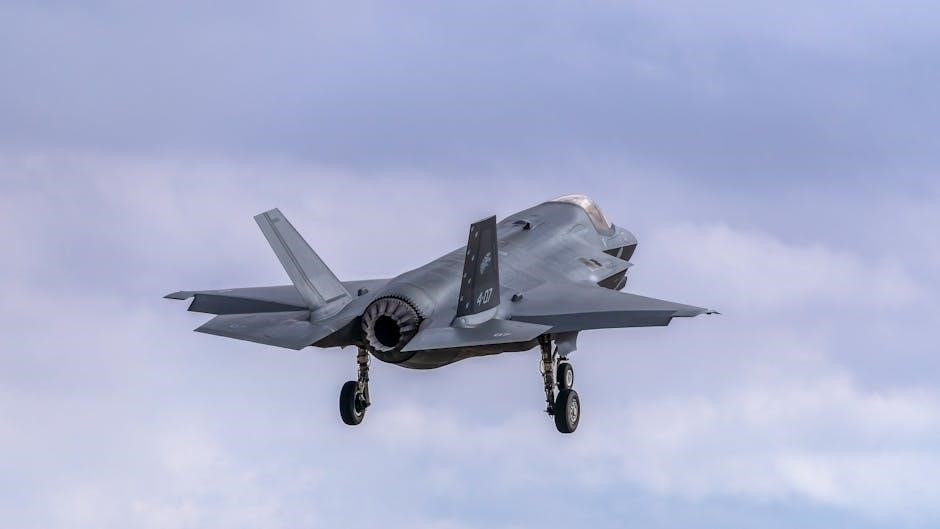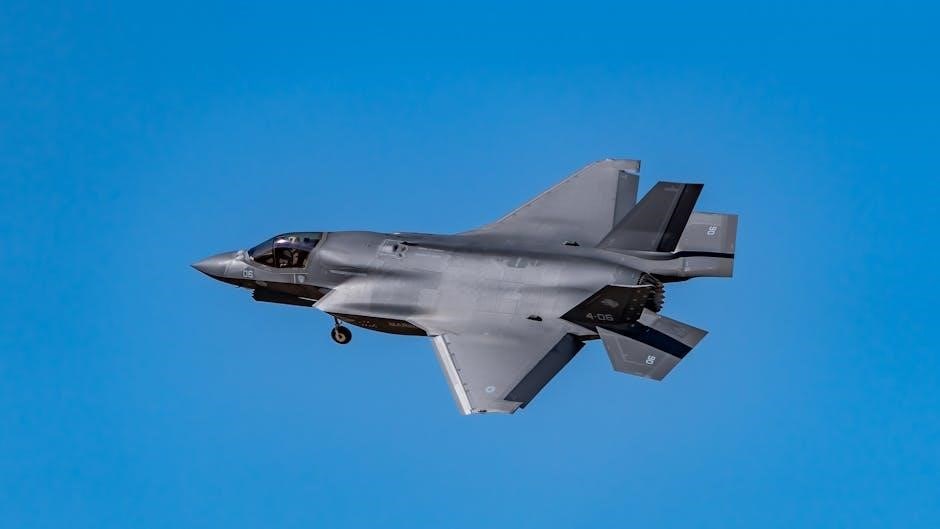The 6-2 defense is a popular alignment in youth football, offering a strong 8-man box to counter run-heavy offenses. It balances flexibility with simplicity, making it ideal for teams needing to adapt to various offensive strategies while maintaining defensive stability. Coaches often praise its effectiveness in shutting down ground attacks and its ease of adjustment to different game situations.
1.1 Overview of the 6-2 Defense
The 6-2 defense is a base defensive scheme commonly used in youth football, featuring six defensive linemen and two linebackers. It emphasizes an 8-man box to stop the run, making it highly effective against run-heavy offenses. The defense is versatile, allowing adjustments to counter various offensive formations, such as double tight ends, twins, and trips setups. Its simplicity makes it ideal for younger players, as it focuses on fundamental assignments rather than complex pre-snap adjustments. Coaches often praise its balance and adaptability, making it a cornerstone of many defensive playbooks at the youth and high school levels.
1.2 Popularity in Youth Football
The 6-2 defense is widely popular in youth football due to its simplicity and effectiveness against run-heavy offenses. Its 8-man box alignment provides additional support at the line of scrimmage, making it difficult for offenses to establish a consistent ground game. Coaches appreciate its ease of teaching, as it relies on fundamental assignments rather than complex pre-snap adjustments. The defense also offers flexibility, allowing teams to transition into other formations like the 4-4 or Gap 8 when needed. Its balanced structure and ability to counter common youth offensive schemes make it a favorite among coaches at this level.
1.3 Key Characteristics of the 6-2 Defense
The 6-2 defense is characterized by its strong 8-man box alignment, featuring two defensive linemen, four linebackers, and two defensive backs. This setup emphasizes stopping the run while maintaining pass coverage. The defense relies on quick linebackers and aggressive defensive linemen to penetrate gaps. Cornerbacks and safeties provide deep support, ensuring balanced coverage. Its flexibility allows for easy adjustments to offensive formations, such as shifting to a 4-4 or Gap 8 defense. The 6-2 is praised for its simplicity, making it ideal for younger players, while still offering complexity for advanced teams to exploit offensive weaknesses effectively.

Positions in the 6-2 Defense
The 6-2 defense features two defensive linemen, four linebackers, and two defensive backs, including cornerbacks and safeties, emphasizing a strong front with versatile defenders.
2.1 Defensive Linemen
In the 6-2 defense, defensive linemen are the backbone of the front, responsible for occupying blockers and creating gaps for linebackers. Typically, two defensive tackles are used.
Their primary role is to control the line of scrimmage, engaging offensive linemen to free up linebackers. They must be physical, strong, and adept at occupying double teams.
Defensive linemen often align in a “shade” or “head-up” technique, depending on the call. Their ability to hold gaps is critical for the defense’s success, allowing linebackers to flow freely to the ball.
Coaches emphasize proper hand placement, footwork, and leverage to ensure linemen can control blockers effectively. This position is vital for stopping the run and setting up the defense for success.
2.2 Linebackers
In the 6-2 defense, linebackers play a crucial role as the second layer of defense. Typically, two inside linebackers are used, often referred to as “Mike” and “Will.”
Their primary responsibilities include reading the offense, making calls, and filling gaps against the run. They must also drop into coverage and handle short-to-intermediate pass routes.
Linebackers in this scheme are usually aligned behind the defensive tackles, allowing them to flow freely to the ball. Their ability to read blocking schemes and react quickly is vital for stopping both the run and pass.
Coaches often emphasize proper alignment, reading keys, and tackling techniques to ensure linebackers can execute their assignments effectively.
2.3 Cornerbacks
In the 6-2 defense, cornerbacks are essential for covering receivers and securing the perimeter. They typically align outside the wide receivers, playing a mix of man-to-man and zone coverage.
Their primary role is to disrupt passes and prevent big plays down the sideline. Cornerbacks must also provide run support, flowing quickly to the ball to stop outside runs.
In this scheme, cornerbacks often play with a “bail” technique, breaking on the ball at the snap to stay in phase with receivers. Their ability to read the quarterback and react to the ball is crucial for success.
Coaches emphasize proper footwork, hand placement, and eye discipline to ensure cornerbacks can execute their assignments effectively in both coverage and run support.
2.4 Safeties
In the 6-2 defense, safeties play a critical role as the last line of defense. They are typically aligned 10-12 yards deep, providing deep coverage and supporting the cornerbacks. Their primary responsibilities include diagnosing pass plays, covering deep routes, and providing run support when needed. Safeties must excel in reading the quarterback’s eyes and reacting quickly to the ball. They often serve as the defensive backs’ leader, ensuring proper alignments and communication. Their ability to tackle in space and limit big plays is vital to the defense’s success. Effective safeties balance coverage skills with the ability to fill gaps in run support.
Base Alignments
The 6-2 defense features two primary base alignments: Wide Tackle 6-2 and Tight 6-2. These setups dictate the defensive linemen’s spacing to counter various offensive schemes effectively.
3.1 Wide Tackle 6-2 Formation
The Wide Tackle 6-2 formation positions defensive linemen outside the offensive tackles, creating a 6-2 gap scheme. This alignment emphasizes speed and agility, allowing linemen to penetrate gaps effectively. The wide alignment forces offensive linemen to reach or slide, disrupting blocking schemes. Linebackers are freed to flow to the ball without immediate blockers, enhancing their ability to make tackles. Cornerbacks and safeties provide deep support, ensuring pass coverage while the front seven pressures the quarterback. This formation excels against spread offenses and teams that rely on quick passes or outside runs, making it versatile for various game situations.
3.2 Tight 6-2 Formation
The Tight 6-2 formation aligns defensive linemen closer to the center, creating a 6-2 gap scheme focused on stopping interior runs. This formation emphasizes physicality and gap control, with defensive linemen occupying blockers to free linebackers. Linebackers flow quickly to the ball, attacking gaps aggressively. The tight alignment limits the offense’s ability to create seams, forcing runs wide. However, it can be vulnerable to outside runs and quick passes. Coaches often use this formation against teams that rely on power running games, as it maximizes defensive strength in the middle while relying on secondary support for outside containment and pass coverage.
3.3 Adjustments to Offensive Formations
The 6-2 defense requires strategic adjustments based on offensive formations. Against heavy run sets, defensive linemen tighten gaps, and linebackers focus on fill keys. For pass-heavy formations, safeties may align deeper, and cornerbacks play off coverage. The defense adapts by shifting linemen or linebackers to counter offensive strengths. Coaches script alignment checks to match offensive personnel and formation tendencies. These adjustments ensure the 6-2 remains effective against diverse offensive strategies while maintaining its core strengths. Proper communication and pre-snap reads are critical for seamless execution of these in-game adjustments.

Defensive Line Calls
Defensive line calls in the 6-2 defense dictate gap control and rushing lanes. These calls ensure linemen align correctly to counter offensive blocking schemes and protect assignments;
4.1 In/In Call
The “In/In” call directs both defensive tackles to move inside, targeting the B and A gaps. This call is designed to clog interior running lanes and pressure the quarterback. The defensive ends must adjust by pressing hard to contain the edges, preventing outside runs or passes. This call is effective against offenses that rely on inside zone runs or quarterback draws. It forces the offense to adjust its blocking scheme, creating opportunities for the linebackers to flow freely to the ball. Proper execution requires precise communication and gap discipline to avoid overcommitting and leaving vulnerabilities on the perimeter.
4.2 In/Out Call
The “In/Out” call assigns one defensive tackle to move inside, targeting the A gap, while the other tackle shifts outside, aligning on the tight end or edge. This call balances interior and exterior defense, countering both inside runs and outside sweeps. The defensive ends must adjust their alignment slightly, ensuring edge containment. Linebackers remain vigilant, preparing to fill gaps or cover flats. This call is versatile, adapting to offenses that mix inside and outside runs. Proper execution requires clear communication and disciplined gap responsibility to avoid overcommitting and leaving the defense vulnerable to counter plays or passes.
4.3 Out/Out Call
The “Out/Out” call directs both defensive tackles to shift outside, aligning on the edges or tight ends. This call is often used to counter offenses with heavy outside runs or to set the edge against sweeps and screens. The defensive ends will reduce their alignment slightly to maintain edge responsibility. The “Out/Out” call emphasizes containing the perimeter while forcing runs back inside. It requires discipline from the defensive line to avoid over-pursuing and leaving interior gaps exposed. This call is effective against offenses that rely on outside speed and quick passes, forcing the action to flow toward the linebackers and secondary support. Proper execution ensures edge containment and funneling plays to the defense’s strength. This call is particularly useful in situations where the offense is attempting to establish a outside running game or utilizing screen passes to the wide receivers. By shifting the defensive tackles outside, the defense can neutralize the offense’s ability to attack the edges and force the ball carrier into a more congested area where additional defenders can make the tackle. Additionally, the “Out/Out” call can be used to counter offenses that frequently use motion or formations designed to create mismatches on the perimeter. Coaches often use this call to disrupt the offense’s timing and rhythm, making it harder for them to execute their designed plays effectively. The key to the success of the “Out/Out” call is the ability of the defensive line to quickly recognize the offense’s formation and adjust their alignment accordingly. This requires effective communication and a high level of situational awareness from the defensive players. When executed correctly, the “Out/Out” call can be a powerful tool in shutting down an offense’s outside attack and forcing them into less favorable situations. However, it is important for the defense to remain balanced and not overcommit to the outside, as this can leave them vulnerable to inside runs or play-action passes. The “Out/Out” call is a versatile defensive strategy that, when used appropriately, can significantly enhance a team’s ability to defend against a variety of offensive schemes.

Linebacker Calls
In the 6-2 defense, linebackers serve as the defensive backbone, executing calls like the Sting Call, and making critical adjustments to counter various offensive strategies effectively.

5.1 Sting Call
The Sting Call is a key linebacker adjustment in the 6-2 defense, designed to disrupt offensive timing. It involves one linebacker blitzing while the other covers underneath, creating pressure and confusion. This call is particularly effective against pass-heavy offenses, as it forces the quarterback to make quick decisions. Linebackers must execute precise timing and technique to avoid gaps in coverage. Coaches often use the Sting Call in obvious passing situations, such as third-and-long, to exploit offensive weaknesses. Proper execution can lead to sacks or interceptions, making it a valuable tool for aggressive defensive strategies.
5.2 Other Linebacker Adjustments
Beyond the Sting Call, linebackers in the 6-2 defense utilize various adjustments to adapt to offensive schemes. Shifts and slides enable linebackers to align properly versus formations, ensuring gaps are filled. Cross keys allow linebackers to read offensive blockers and flow, making instinctive plays. Additionally, robber calls let linebackers drop into passing lanes, anticipating routes. These adjustments enhance versatility, enabling the defense to counter diverse offensive looks effectively. Coaches emphasize quick reads and disciplined execution to maximize their impact. These strategies are crucial for maintaining defensive balance and responding dynamically to offensive threats.
Adjustments to Common Offensive Formations
The 6-2 defense adapts to various offensive formations by shifting linebackers and defensive linemen to counter strengths. It effectively responds to tight ends, trips, and quads formations.
6.1 Double Tight End Formations
The 6-2 defense counters double tight end formations by shifting the defensive front to the strength of the formation. The nose guard and tackles adjust to create a stronger presence at the point of attack. Linebackers cheat down to fill gaps, ensuring run defense remains stout. This alignment also allows for better control of the edges, where tight ends often try to seal blocks. Cornerbacks and safeties may play tighter to the formation to handle short passes and flats, while still maintaining deep coverage responsibilities. This adjustment ensures the defense remains balanced against heavy run sets.
Key assignments include the linebackers reading the tight ends’ blocks to determine run or pass. Defensive linemen focus on occupying blockers to free up linebackers. Safeties provide over-the-top support while cornerbacks handle underneath zones. This approach limits offensive options and forces them into predictable plays, making it easier for the defense to react effectively. By aligning properly, the 6-2 defense can neutralize the double tight end threat while maintaining its core strengths.
6.2 Twins Formation
Against a twins formation, the 6-2 defense adjusts by shifting the cornerbacks and safeties to the side of the twins. This creates a stronger presence on the twins side while maintaining balance. The linebackers and defensive linemen align to counter potential run or pass plays, with the linebackers keying on the offensive formation. The defense may employ man-to-man or zone coverage to handle the twins receivers, ensuring proper depth and leverage. This adjustment forces the offense to exploit other areas, while the defense remains prepared to counter both run and pass threats effectively.
The 6-2 defense also uses defensive calls to shift the front and coverage, creating confusion for the quarterback. By aligning aggressively, the defense can disrupt the timing of the offense, particularly in short-to-intermediate passing routes. This approach emphasizes quick reactions and sound assignment football, allowing the defense to maintain its edge against the twins formation. Proper execution ensures the defense remains one step ahead, limiting offensive opportunities and forcing mistakes.
6.3 Trips Formation
The 6-2 defense faces a challenge with the trips formation, as three receivers on one side create a numerical advantage. To counter this, the defense often rolls the coverage, bringing a safety to the trips side to provide support. Cornerbacks may switch to zone coverage to handle multiple receivers, while the opposite side remains in man-to-man. The defensive line and linebackers adjust their alignment to account for the trips formation, potentially slanting to the trips side. This ensures the defense remains balanced and prepared for both run and pass plays, maintaining its effectiveness against this offensive alignment.
6.4 Quads Formation
The quads formation, featuring four receivers on one side, challenges the 6-2 defense by creating a significant passing threat. To counter this, the defense may shift to a nickel package, replacing a lineman with an extra defensive back. The safeties often rotate to the quads side, and cornerbacks transition to zone coverage to handle multiple receivers. Linebackers must also adjust their drops, focusing on underneath zones to prevent quick completions. This alignment ensures the defense maintains balance while addressing the increased passing threat posed by the quads formation, keeping the offense in check with strategic coverage adjustments.
Attacking the 6-2 Defense
Exploit vulnerabilities in the 6-2 defense by targeting gaps in coverage, using misdirection, and attacking the flats with quick passes to outpace defenders.
7.1 Off-Tackle Runs
Off-tackle runs are highly effective against the 6-2 defense, as they target the vulnerable C gaps. By aiming for the seams between the defensive tackles and linebackers, ball carriers can exploit over-aggressive linebackers. Tight ends and fullbacks play crucial roles in sealing the edge and blocking linebackers. Coaches should emphasize reading defensive alignments pre-snap to identify weak points. Misdirection, such as play-action passes or counters, can further disrupt defensive flow. This approach forces linebackers to hesitate, creating larger running lanes. Consistent execution of off-tackle runs can wear down the defense and control the game’s tempo.
7.2 Flank Runs
Flank runs are designed to attack the edges of the 6-2 defense, exploiting the space outside the defensive ends. By targeting the flats, offenses can neutralize the defensive ends’ aggressiveness and create one-on-one matchups in the open field. Tight ends or wide receivers often block the edge, while the running back aims for the sideline. Misdirection, such as fake handoffs or counters, can freeze linebackers and create additional space. The offensive line must seal the defensive ends inward to prevent pursuit. Flank runs are particularly effective when combined with play-action, forcing linebackers to hesitate and overcommit.
7.3 Short Routes and Screens
Short routes and screens are effective against the 6-2 defense by exploiting its aggressive nature. Slants, hooks, and screens target the flats and underneath zones, where linebackers are often out of position. Wide receivers can run quick ins or outs to create separation, while running backs leak into open areas. Screens, such as bubble or tunnel screens, force defensive linemen to react quickly. These plays neutralize the pass rush and capitalize on the defense’s tendency to commit to the run. Timing and precise blocking are critical to ensure these plays succeed against the 6-2’s numerical advantage at the line of scrimmage.
7.4 Flood Routes
Flood routes are a highly effective way to attack the 6-2 defense by overwhelming its deep coverage. By sending three receivers to one side, the offense creates a numbers advantage against the two safeties. Deep outs, posts, and corner routes test the safeties’ ability to cover multiple threats. The quarterback must identify the soft spot in the zone and deliver an accurate ball. Flood routes exploit the 6-2’s tendency to commit heavily to stopping the run, leaving the secondary vulnerable to vertical attacks. Proper timing and route precision are critical to capitalize on this defensive weakness.

Coaching Tips for Implementing the 6-2 Defense
- Emphasize proper tackling techniques to minimize missed stops.
- Focus on gap discipline to prevent offensive breakthroughs.
- Practice adjustments to counter various offensive formations.
8.1 Emphasizing Key Assignments
Coaches must clearly define each player’s role within the 6-2 defense to ensure execution. Defensive linemen should focus on occupying blockers, freeing linebackers to fill gaps. Linebackers must read keys quickly and attack their assigned areas. Cornerbacks and safeties should maintain disciplined coverage, anticipating routes. Assignments should be tailored to players’ strengths, maximizing effectiveness. Consistent communication and repetition in practice build confidence and cohesion. Players must understand their responsibilities in various formations and adjustments. By emphasizing accountability, the defense becomes a unified, reactive unit capable of countering offensive strategies effectively.
8.2 Tackling Techniques
Proper tackling is essential for the 6-2 defense’s success. Players should focus on head-up, shoulder-led tackles to maximize impact while minimizing injury risk. Defensive linemen and linebackers must practice wrapping up and driving through ball carriers. Cornerbacks and safeties should use foot drills to improve agility and closing speed. Coaches should emphasize staying low, exploding through the hips, and securing the tackle with both arms. Drills like form tackling and live game scenarios help refine technique. Consistent practice ensures players can deliver and withstand contact effectively, maintaining defensive integrity and limiting offensive gains.
8.4 Practicing Adjustments
Practicing adjustments is critical for mastering the 6-2 defense. Coaches should simulate various offensive formations during drills, allowing players to adapt and communicate effectively. Use scrimmages to test alignment shifts and assignment changes. Focus on quick recognition of offensive tendencies, such as motion or formations, and train players to adjust seamlessly. Incorporate walk-throughs to refine alignment details and ensure understanding. Film review sessions can help identify areas needing improvement. Repetition builds muscle memory, enabling players to execute adjustments confidently during games. This preparation ensures the defense remains flexible and responsive to any offensive strategy.

Game Planning and Strategy
Develop a game plan tailored to the opponent’s strengths and weaknesses. Script initial plays to test their defense and identify tendencies. Adjust strategies mid-game based on observations, ensuring flexibility and quick decision-making to exploit offensive vulnerabilities effectively.
9.1 Scripting Early Plays
Scripting early plays is crucial for setting the tone and testing the opponent’s offense. Coaches should select plays that challenge the offense’s strengths and exploit potential weaknesses. This strategy helps identify how the opponent will react to various defensive looks. By scripting, you can force the offense into predictable situations and gain valuable insights. Early plays should include a mix of base defense calls and adjustments to gauge the opponent’s response. This approach allows for mid-game tweaks and keeps the offense guessing. Detailed play scripts are often outlined in 6-2 defense playbooks to guide coaches effectively.
9.2 Identifying Offensive Tendencies
Identifying offensive tendencies is key to anticipating and countering their strategy. Coaches should study opponents’ play-calling patterns, such as down-and-distance preferences and formation alignments. For instance, teams may favor runs on early downs or passes in specific situations. By analyzing game footage, coaches can pinpoint these tendencies and adjust the 6-2 defense accordingly. This proactive approach enables defenders to anticipate plays, making it easier to shut down offensive threats. A well-prepared game plan, as outlined in many 6-2 defense playbooks, ensures the defense is one step ahead of the offense.
9.3 In-Game Adjustments
In-game adjustments are critical to maintaining the 6-2 defense’s effectiveness. Coaches must quickly identify offensive weaknesses and exploit them. Adjustments may include shifting defensive linemen to counter run-heavy formations or aligning linebackers to cover passing lanes. Communication is key, with sideline signals and player cues ensuring everyone is on the same page. Defensive calls can be modified based on the offense’s tendencies, such as blitzing to pressure the quarterback or dropping into coverage. Flexibility and rapid decision-making are essential for outsmarting the offense and dictating the game’s flow.

Resources and Playbooks
Explore detailed 6-2 defense playbooks in PDF format, featuring diagrams, strategies, and drills. Supplement with online tutorials and coaching forums for advanced insights and tips.

10.1 Recommended Playbooks
For mastering the 6-2 defense, consider the Complete 6-2 Defense Playbook, which offers detailed schemes and alignments. The 6-2 Youth Football Playbook is ideal for younger teams, simplifying concepts. Defensive Mastery: 6-2 Strategies provides advanced techniques for experienced coaches. These playbooks, available in PDF, include diagrams, game plans, and practice drills. They cater to various skill levels, ensuring adaptable strategies for any team. Coaches can find these resources on trusted coaching websites, forums, or sports training platforms, making it easier to implement the 6-2 defense effectively.
10.2 Online Coaching Communities
Online coaching communities are invaluable for refining the 6-2 defense playbook. Platforms like Hudl and Coach’s Corner offer forums where coaches share strategies and discuss game plans. Facebook groups such as 6-2 Defense Strategies and Youth Football Coaches Hub provide resources, including PDF playbooks and video tutorials. These communities allow coaches to exchange ideas, ask questions, and learn from experienced mentors. They often feature discussions on adjusting the 6-2 defense for various offensive schemes, making them a great resource for coaches at all levels. Joining these communities can enhance your understanding and implementation of the 6-2 defense playbook.
10.3 Video Tutorials and Guides
Video tutorials and guides are essential for mastering the 6-2 defense playbook. Platforms like YouTube offer detailed breakdowns from experienced coaches, showcasing alignments, assignments, and adjustments. Websites such as Coach’s Clipboard and Football-Defense.com provide instructional videos and downloadable guides. Additionally, Hudl and Vimeo host webinars and clinics featuring expert analysis. These resources often include diagrams, play simulations, and game footage, making them invaluable for coaches to implement the 6-2 defense effectively. They complement PDF playbooks by offering visual and practical insights, enhancing understanding and execution on the field.
The 6-2 defense playbook is a versatile and effective strategy, offering coaches tools to counter various offensive schemes. Its adaptability and simplicity make it ideal for youth football, while advanced techniques ensure competitiveness at higher levels. With proper execution and adjustments, the 6-2 defense can dominate games. Coaches should leverage playbooks, videos, and community resources to master its implementation and maximize defensive success.
11.1 Effectiveness of the 6-2 Defense
The 6-2 defense is highly effective in stopping the run and pressuring the quarterback, making it a popular choice for coaches. Its six-man front dominates at the point of attack, while the two linebackers provide versatility. The defense excels against inside runs and play-action passes, forcing offenses into predictable situations. Its simplicity allows players to react quickly, while its flexibility enables adjustments to counter modern spread offenses. When executed correctly, the 6-2 defense can shut down an opponent’s ground game and disrupt passing rhythm, making it a formidable scheme at any level of competition.

11.2 Final Thoughts
The 6-2 defense remains a powerful and straightforward scheme, ideal for teams seeking to dominate the run and pressure the quarterback. Its simplicity and flexibility make it accessible for younger players while still challenging offenses at higher levels. Coaches who master its alignments and calls can create a robust defensive identity. While no defense is perfect, the 6-2’s ability to adapt and disrupt makes it a valuable addition to any playbook. For teams looking to control the line of scrimmage and limit offensive creativity, the 6-2 defense is a proven and reliable choice.